ஓடிசாவின் 2300 தொன்மையான சிசுபால்கர்க் பொமு 300 முதல் பொஆ 400 இடையிலான நாகரிகத் தொன்மைப் பொருட்கள் கிடைத்துள்ளன. கார்பந்14 சோதனை செய்யப்பட்டு உள்ளன.
SISUPALGARH THE LOST CITY
Sisupalgarh, the name itself means a lot. The remains of the ancient city Sisupalgarh has been discovered near Bhubaneswar, capital of the Odisha,India. And truly, I am fortunate enough to live in the city. I try to find various things regarding Sisupalgarh and to my surprise this monument or rather say city, is one of the most preserved city in the world. The excavations of Sisupalgarh took place in various phases. The first excavations at the site were carried out by Mr.B.B. Lal in 1948.On the basis of the architectural pattern and artefacts discovered during the excavations, Mr.B.B.Lal concluded that this fort city flourished between 3rd century BC and 4th century AD. An American-Indian team took up work in 2001. In 2005 ground penetrating radar revealed the probable position of the southern moat.On the basis of the new findings, Miss Monica L. Smith and Mr.R.K. Mohanty claim that the fortified city flourished from around 5th century BC and probably lasted well after the 4th century. Thus, this defensive settlement originated prior to the Mauryan empire.
Stone pillars of Sisupalgarh
The construction of Sisupalgarh was based on JalaDurga(Water Fort) concept, which in Odia is known as GadaKhai concept. Jala Durga is a type of durga or fort, which must be situated within water body, and its access is rendered difficult on account of the typical tract. It is divided into two categories, viz., the Anterdvipa (Island fort) and the Sthala Durga (Land fort). Antardvipa-Durga (island fortress) is surrounded by natural (sea or river) water bodies. Sthala-Durga (plain fortress)is surrounded by artificial moats or irrigated by a river. This may be assumed that Sisupalgarh was based on Sthala Durga concept, as we can also find remains of River Gandhawati, which is now famous as Gangua nala.
Present state of River Gandhawati
They also have a planned drainage system. It's really surprising that when urbanisation and planning was not taken place in full fledged form, the planners of Sisupalgarh, develop such kind of design.
Remains of Drainage system of Sisulpalgarh
The pillars of Sisupalgarh really attracted lots of enthusiastic mind. But, what were the specific uses of these are still not clear. Some room type structures were discovered adjacent to those pillars, during the excavation.
Till now Eighteen stone pillars were excavated, and a lot is there to excavate. Kindly note the body of pillar is plain.While travelling into the city, I found a small settlement of some people. Near their settlement, a small pond is available.From this small pond, at that time, some antiquities were found but they were lost now. A special type of pillar were recovered from this pond by these persons and due to the typical structure of that pillar, they are worshiping it now, as a Shiva Linga.
Pillar worshipped as Shivling by Locals
Inside the city you will get another small pond. This pond is famous as RaniGadhua, or the pond where the Queen used to bath.This RaniGadhua is almost dried up now. The typical things I found there was a well and a boundary of a small tank. When you closely look at the boundary of that tank, you will observed the peculiar images of elephants, which were also found in lots of temples and other heritage places.
The steps that lead us to the RaniGadhua also have a small temple like structure. It may signify that, after bath, queen did some small puja remembering her IshtaDeva or IshtaDevi.
Elephant Carvings lead to the Rani Gadhu Pond at Sisupalgarh
The other side wall also has structures similar to the old Kalingan Architecture. Various gates were also discovered during the excavations. It is known that this fortified city had eight numbers of gates. Two gates pierce each of the glacis of the quadrangular plan. A glacis is an artificial slope as part of a castle or fortresses. Sisupalgarh's defenses are the highest known of this period in India. The ancient settlement probably was not dense, but rather there was room inside the fortress to graze.
The Steps to the gate of the Sisupalgarh fort
The population of the city could have amounted to 20,000 to 25,000. Archaeologists have employed geophysical survey, systematic surface collections and selected excavations in the 4.8 km perimeter of the fortified area and studied individual houses and civic as well as domestic architecture to arrive at the figure. The significance of the population is clear when one bears in mind that the population of classical Athens was 10,000. However the historians also claim that it is too early to comment on the population of the city as yet only a part of the city has been excavated.
Remains of Drainage system of Sisulpalgarh
Now a day, due to the negligence of state government, ASI and Odisha tourism this world known heritage city is under the threat of Land Mafia. According to a survey by Archaeological Survey of India (ASI) in 1947-48, the area was spread over 562.68 acres of land, but today only 0.77 acres of this entire land remain under the ASI's control. More than 1,000 buildings are constructed inside the fort area, violating norms of the Ancient Monuments and Archaeological Sites and Remains (AMASR) (Amendment and Validation) Act, 2010. This clearly shows that there has been no action taken by the state and ASI authorities to stop the illegal activities.
A water tank amidst the ruins of Sisulpalgarh
Illegal encroachments can be seen by land mafias in the area. Since 2002, yearly satellite images document the illegal house building especially in the north-western quarter which increased in tempo since 2010. Encroachment starts with the staking out of lots. Gradually, building materials is piled up. Foundation walls are laid. Then suddenly the house is erected as soon as possible before the officials can react. Since 2010 the developers have begun to build into the southern city wall and the officials seem to do nothing to counter this.
Illegal encroachment at Sisupalgarh
Our historians identified Sisupalgarh with Toshali and Kalinga Nagara. Kalinga Nagara was the famous capital city of King Kharavela. The Hati Gumpha (Elephant Cave) inscription of Udayagiri in Bhubaneswar points towards this fact.
I want to conclude with a famous quotation by German Professor Paul Yule of the University of Heidelberg
'We have one Sisupalgarh in the entire world and we have to preserve it.'
When German Professor Paul Yule can understand the importance of Sisupalgarh, I wonder why our own Government, ASI and Tourism department are not able to understand.
https://www.thehindu.com/news/national/other-states/land-mafias-damage-rampart-of-ancient-fortified-city-of-sisupalgarh/article66572299.ece
Land mafias damage rampart of ancient fortified city of Sisupalgarh
The Orissa High Court, hearing a case related to the protection of archaeological heritage, directed eviction from 562.681 acres of notified area
March 02, 2023 09:50 pm | Updated 09:50 pm IST - BHUBANESWAR

The Archaeological Department of Government of India have recently excavated a site called “Sisupalgarh‘ near Bhubaneswar in Orissa, and unearthed the remains of a township which flourished between 300 B.C. and the 4th century A.D. | Photo Credit: The Hindu Archives
Land sharks armed with heavy earth-moving equipment have damaged a portion of the wall of the fortified ancient city of Sisupalgarh, a majestic archaeological heritage that has survived over 2,600 years, on the outskirts of Bhubaneswar.
What has made matters worse is that the brazen act of destruction occurred just as the Archaeological Survey of India (ASI) and Odisha’s Revenue Administration were working in tandem to acquire the land and safeguard the invaluable heritage.
A case has been registered at the local police station. The ASI has sought the State government’s immediate intervention, before the famous ancient fortified urban centre succumbs to greedy urbanisation.
“The rampart on western part of ancient fortified city has been damaged. Miscreants have carried out destruction at three places during the past two days. This is one of worst kinds of vandalism of archaeological heritage,” Dibishada Brajasundar Garnayak, Superintending Archaeologist, ASI, Puri Circle, said.
“This is the only fortified site in India having eight gateways. If we are unable to protect the 2600-year-old heritage, we should feel ashamed,” Mr. Garnayak said.
The ASI archaeologist lamented that people were not aware of further land acquisition for the protection of the site. The rampart of the fortified city is now being demarcated by a direction from the Orissa High Court.
The excavation of the Sisupalgarh site was first taken up in 1948, when it was declared a Centrally Protected Monument under the provisions of the Ancient Monuments Preservation Act, 1904, involving an area measuring 562.681 acres and covering five villages, including Sisupalgarh, Badadhanpu Lingipur, Raghunathpur and Mahabhoisasan, in 1950.
Sisupalgarh, believed to have been built around the 7th to 6th century BCE, served as the capital of the Kalinga kingdom, and was an important centre of trade and commerce during ancient times.
During its excavation, archaeologists were surprised to find architectural and engineering marvels of the fortified city. The urban centre had an area of 1.2 km by 1 km, and it was surrounded by a moat. The water management system of the city was unique. The fortification was carried out in the 4th to 3rd century BCE, when King Kharavela took up the repair of the city 2,100 years ago.
Sisupalgarh is said to be one of very few historical references of the present capital city of Bhubaneswar. Over the years, people have encroached on the land near the historical site, with both the ASI and the State government negligent in demarcating and acquiring land around the excavated Sisupalgarh site. Many artefacts are believed to have gone under the construction of residential houses. More than 100 cases pertaining to land encroachment have been filed with the State police.
Taking a strong view of the deplorable preservation of ancient heritage, a Division Bench of the Orissa High Court, comprising Chief Justice S. Muralidhar and Justice M.S. Raman had on January 10, 2023 ordered that a joint survey under supervision of the Tahasildar, Bhubaneswar along with representatives from the ASI, be taken up.
“This will be completed in 90 days of time. All vacant government land in the notified area will be handed over to ASI for protection by constructing boundary wall. .. The encroachment over government land within the notified area of 562.681 Acre would be evicted and same would be handed over to ASI after filing of requisition for the same by ASI,” the judgment says.

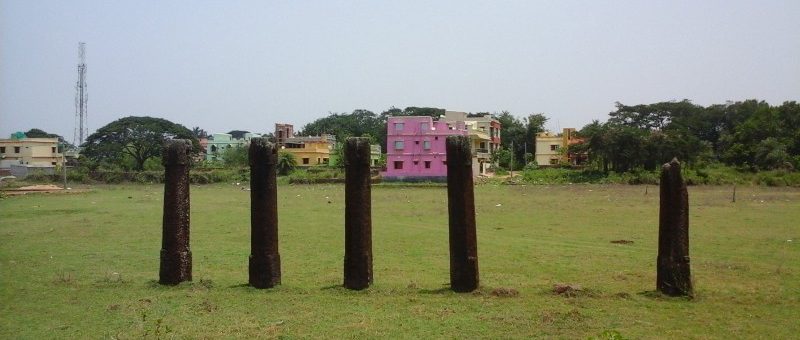

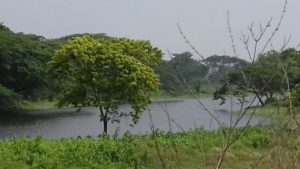
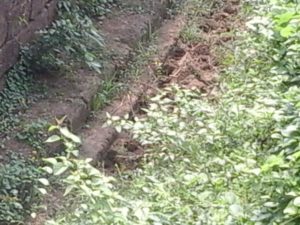

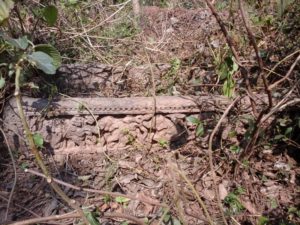
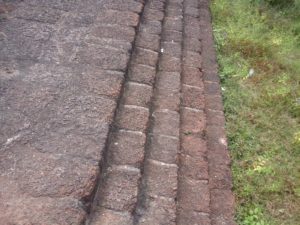
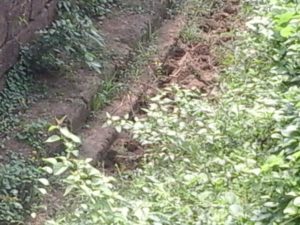



COMMENTS
SHARE